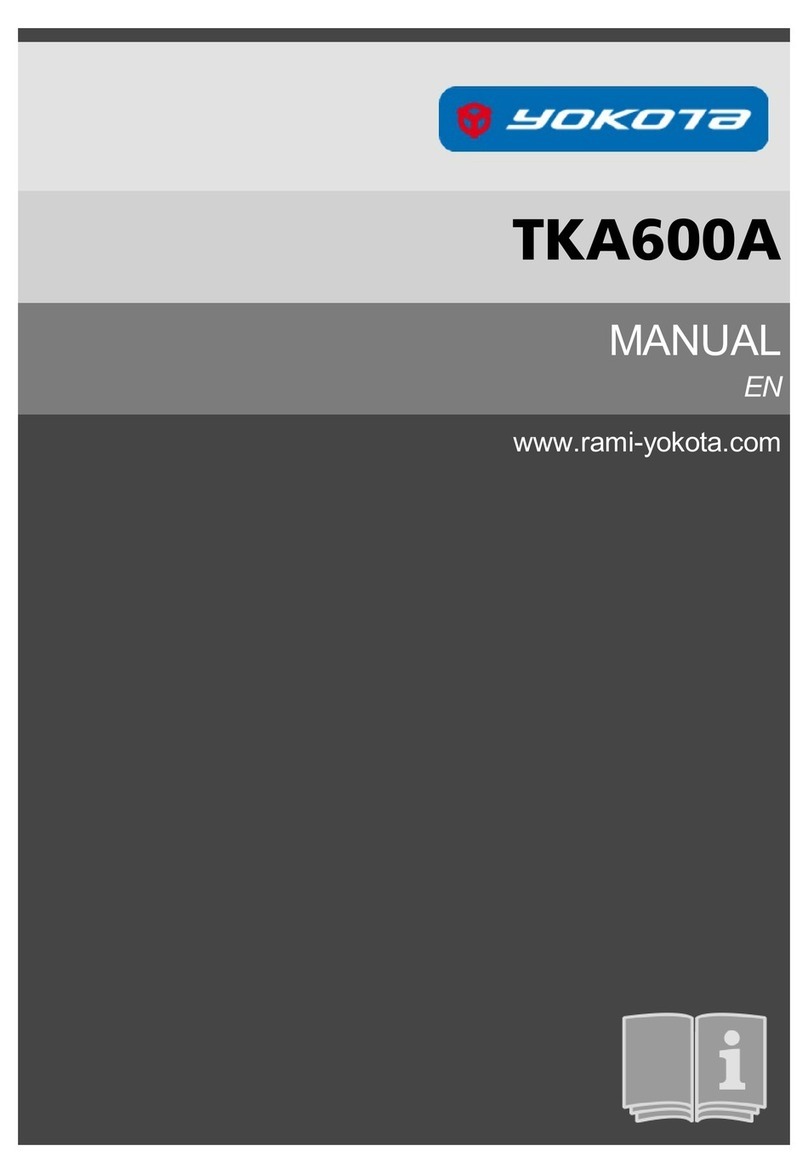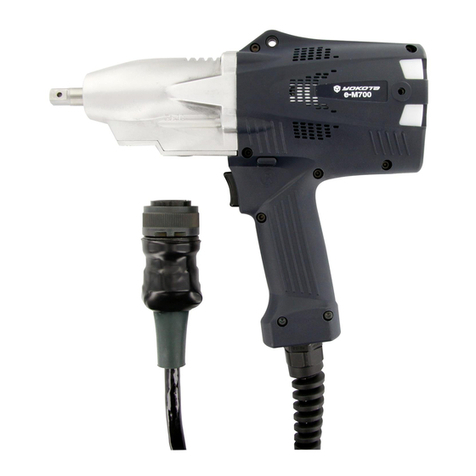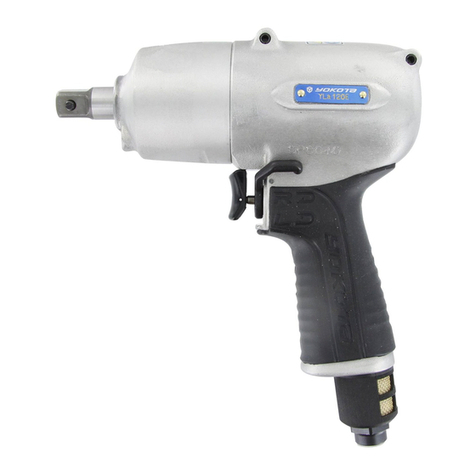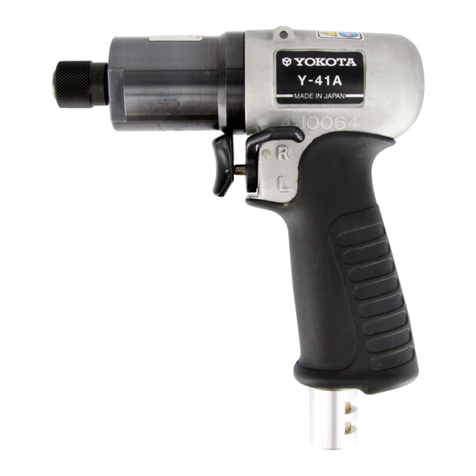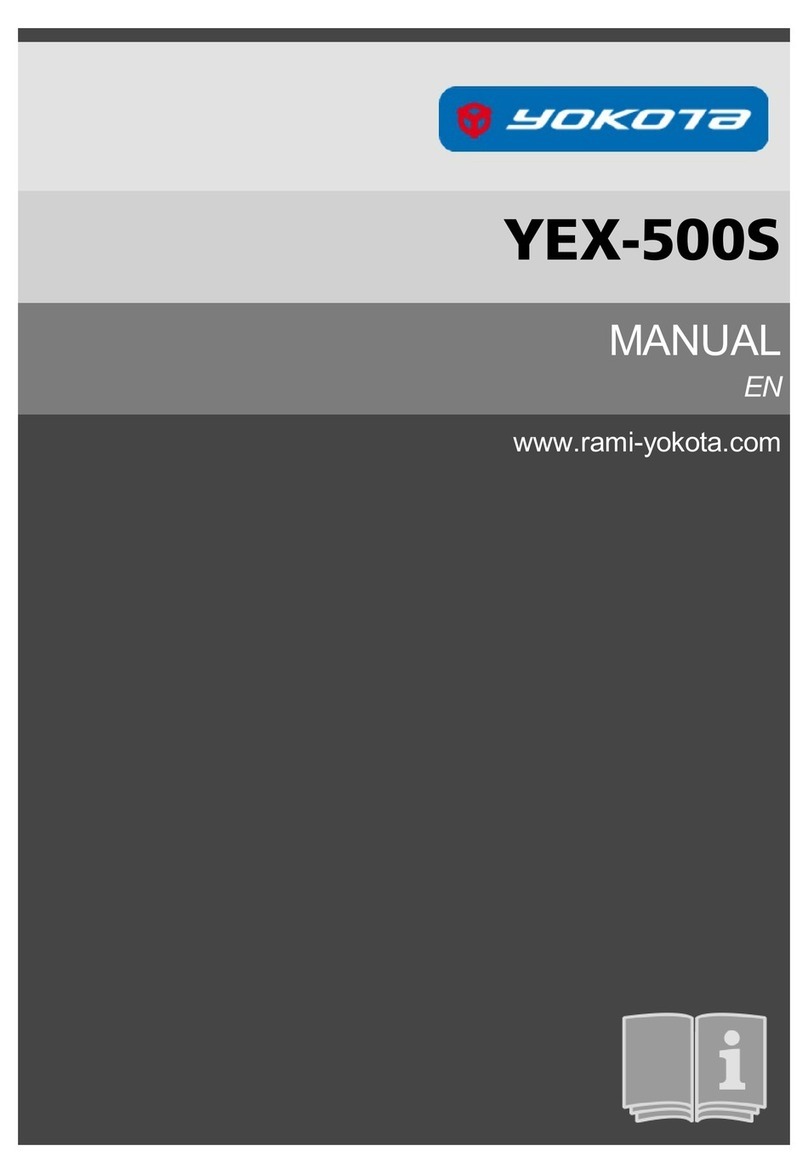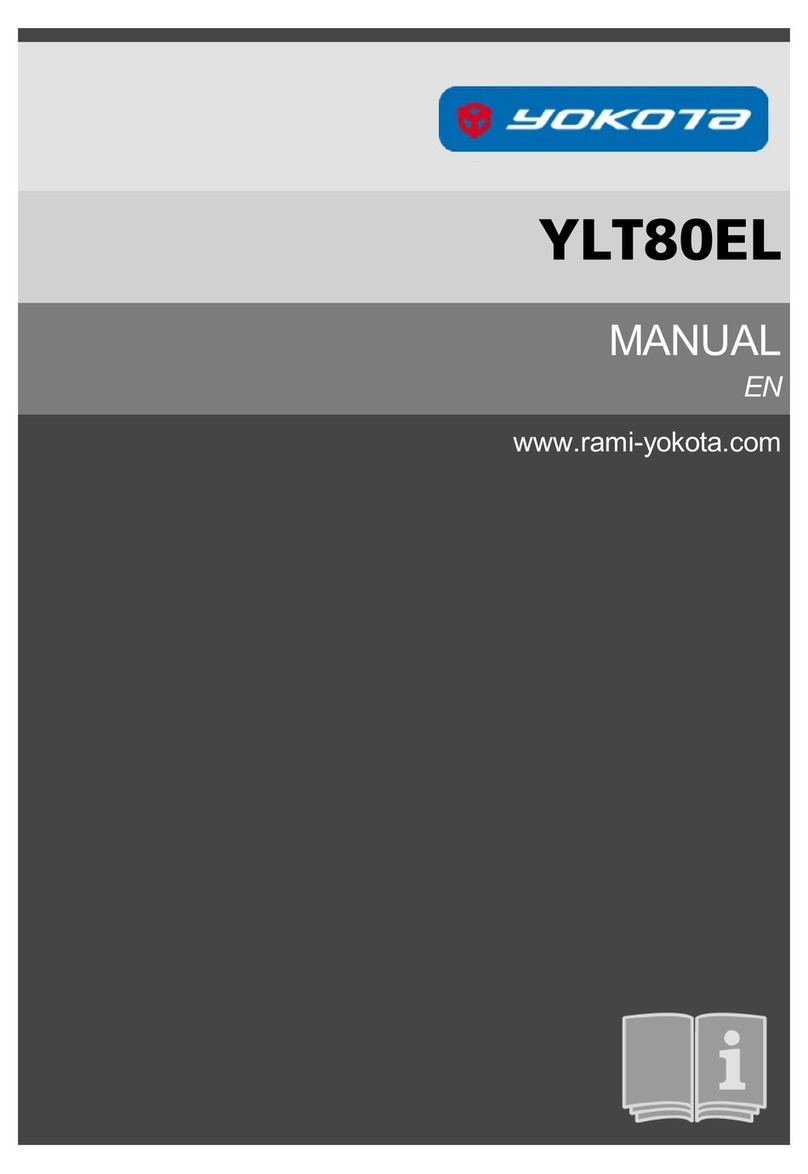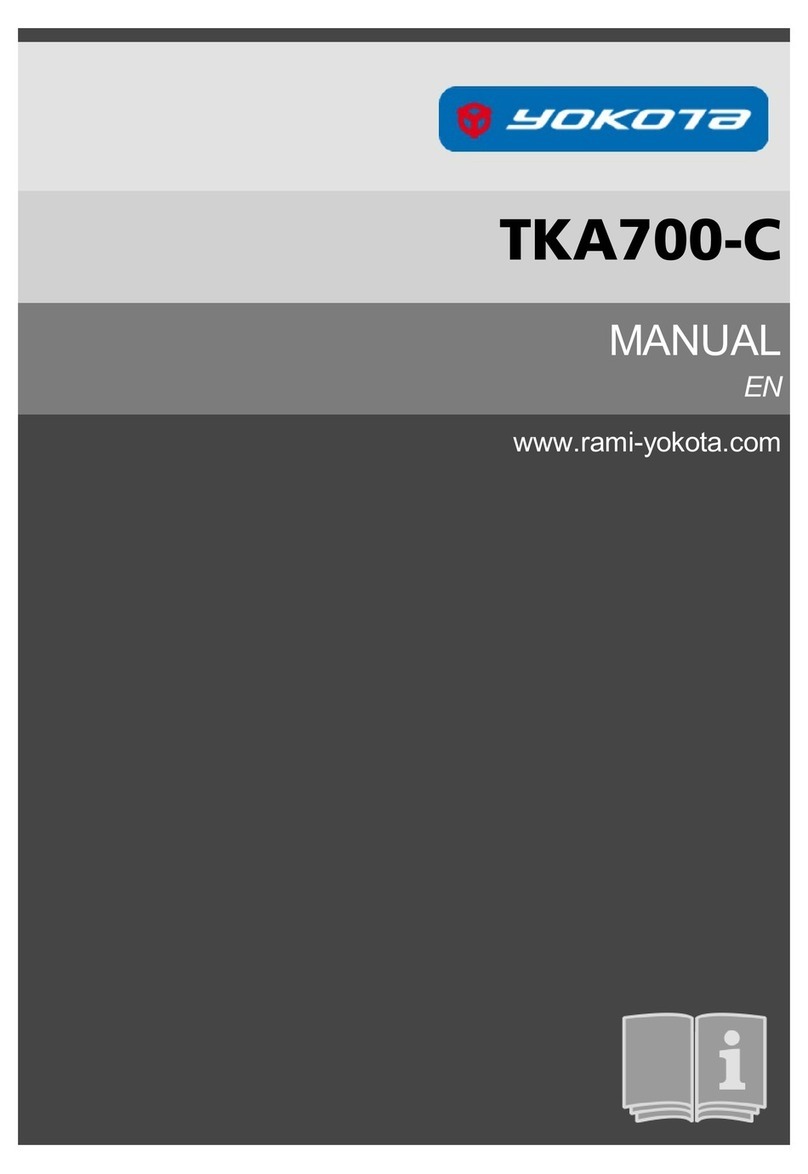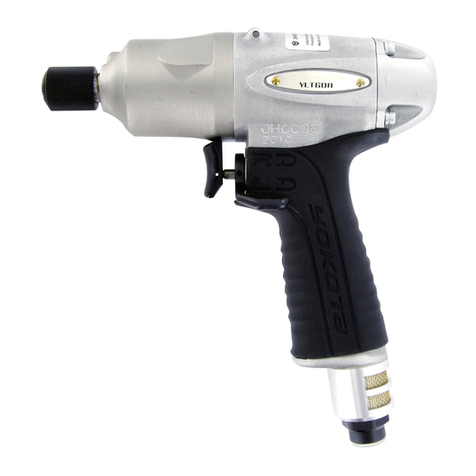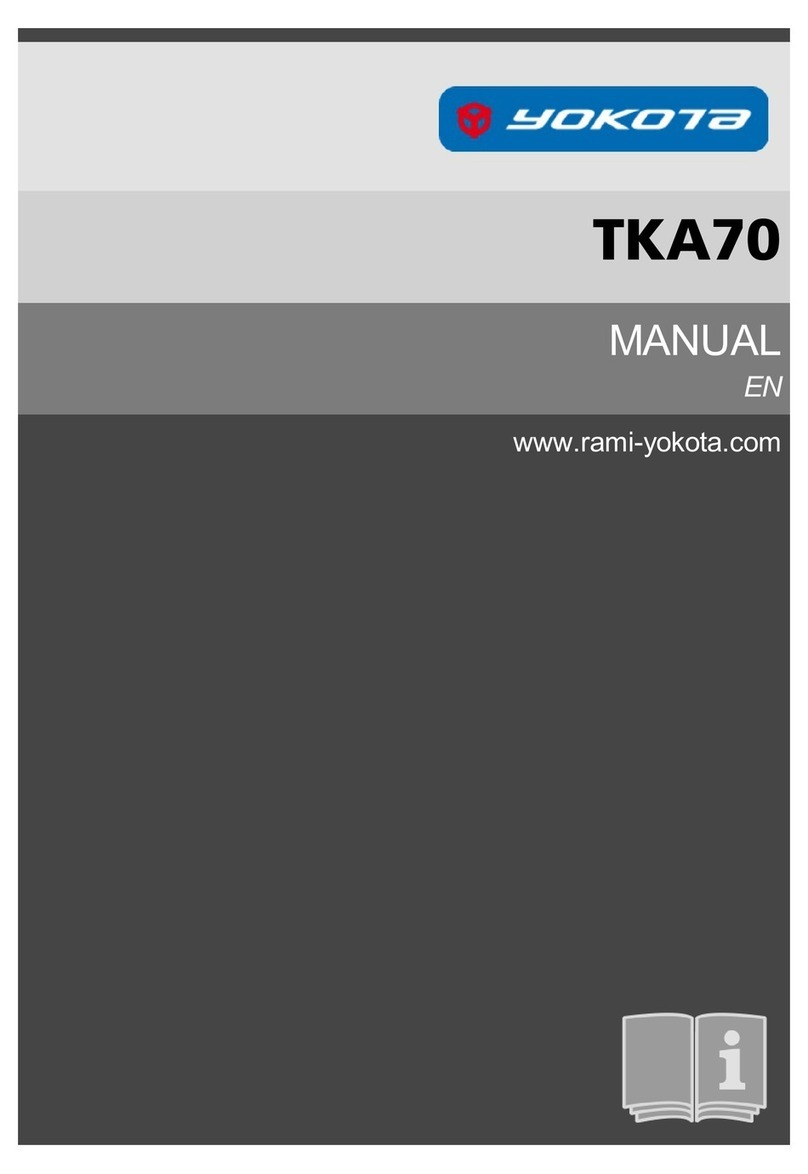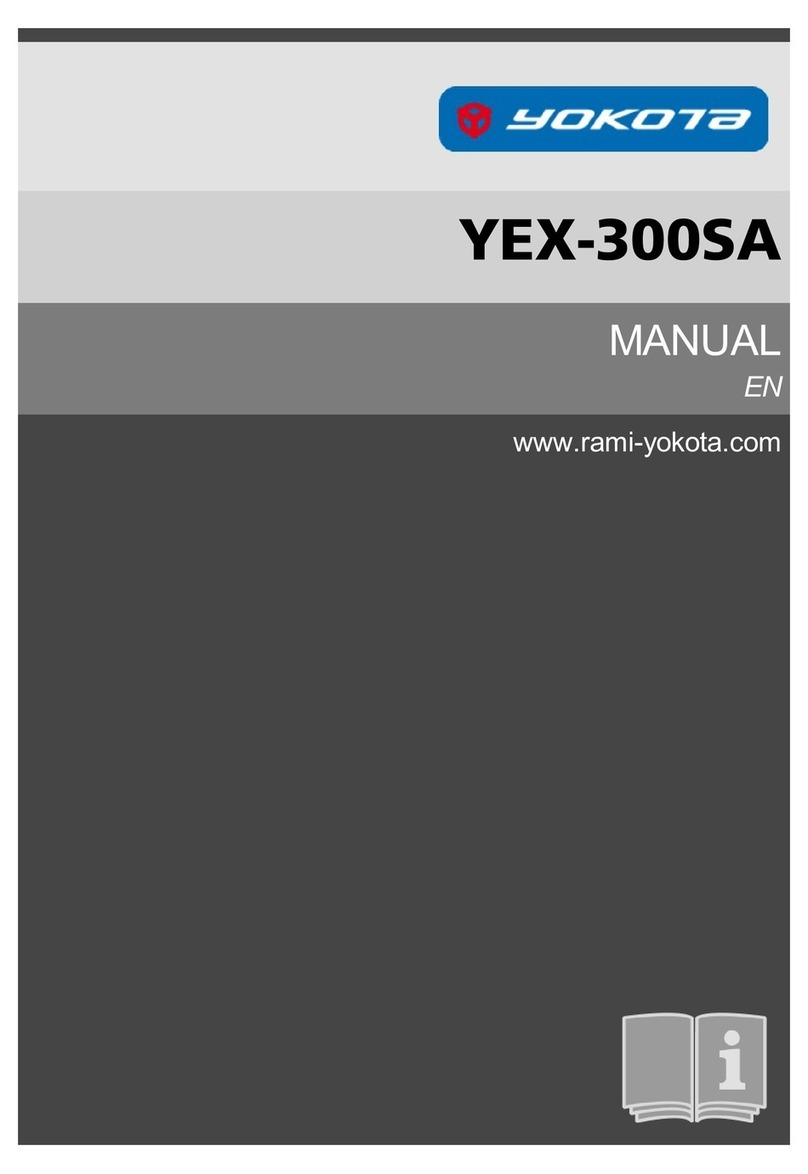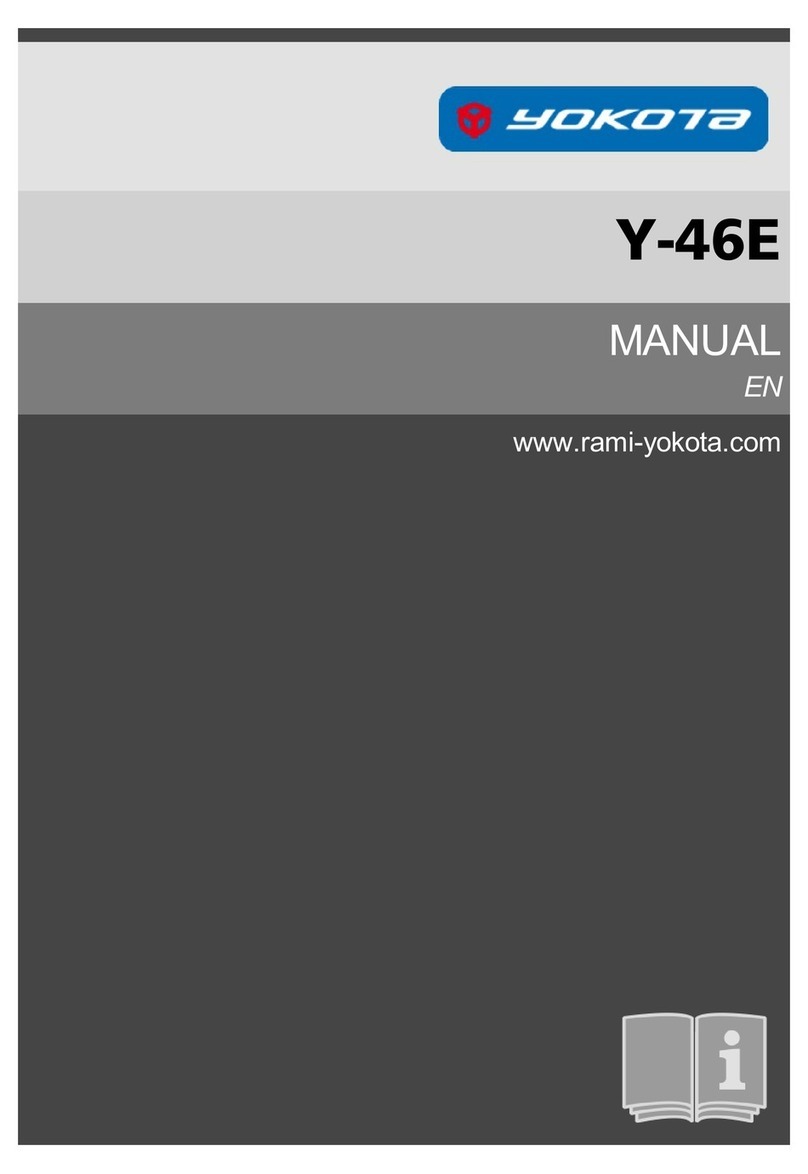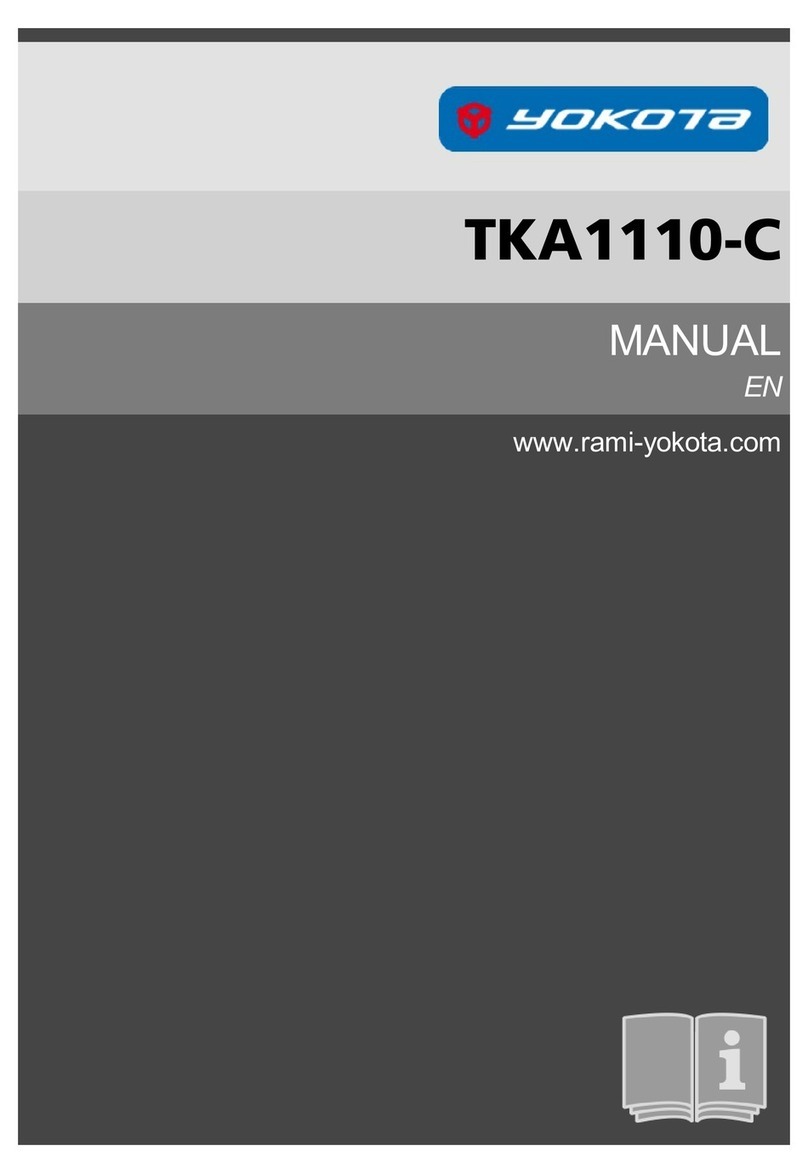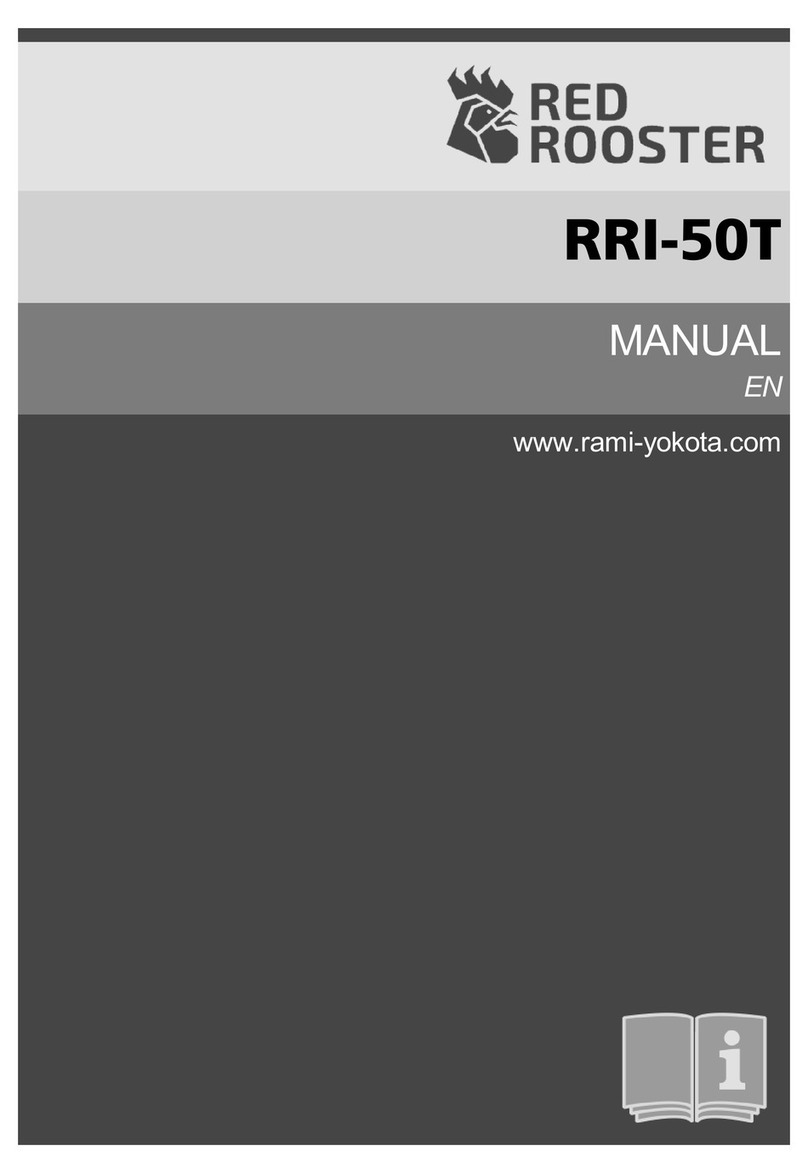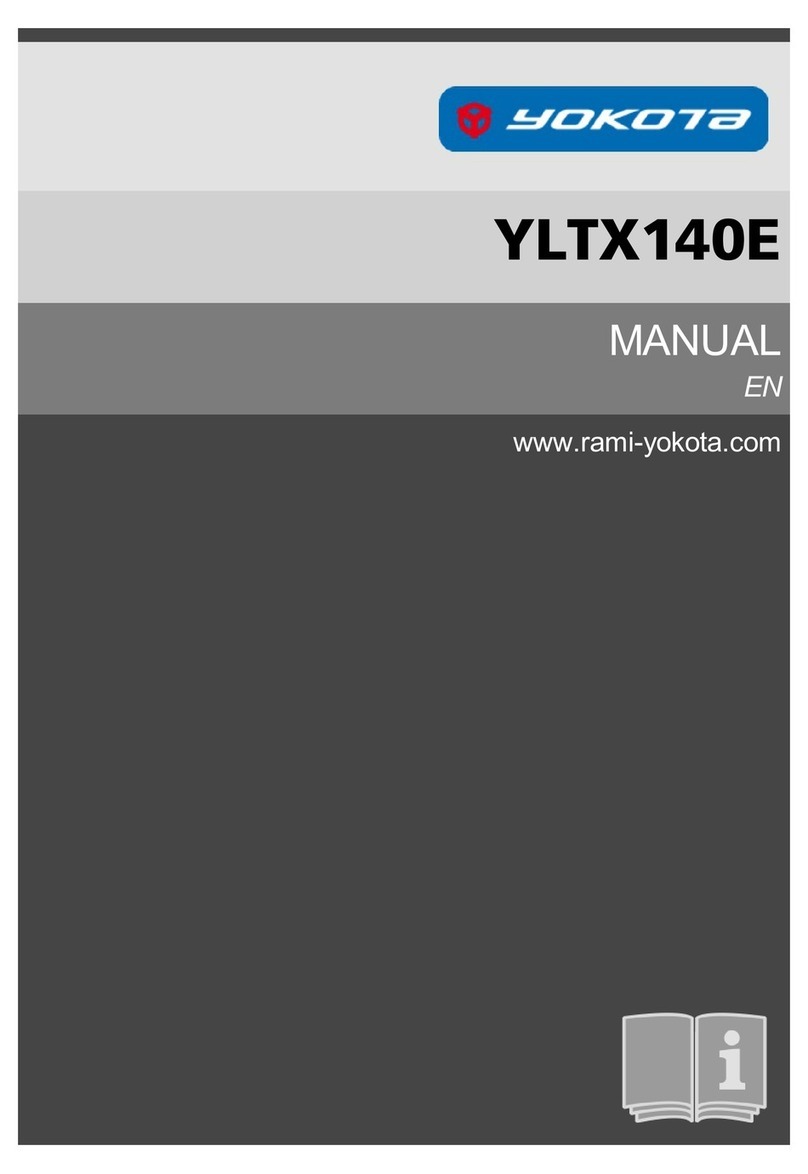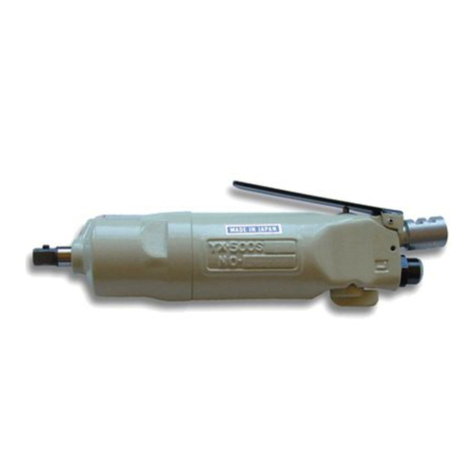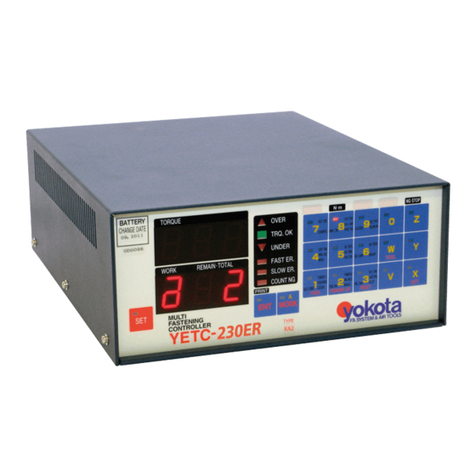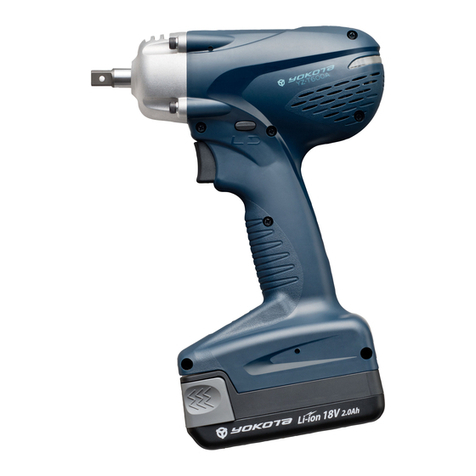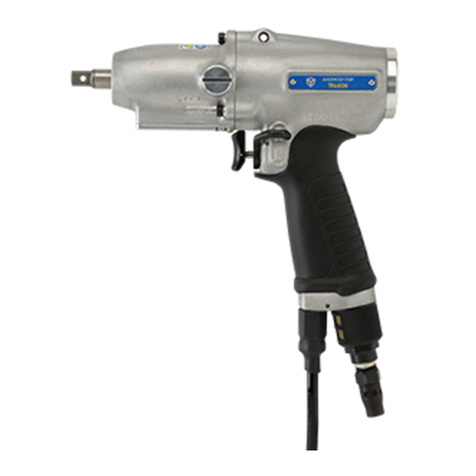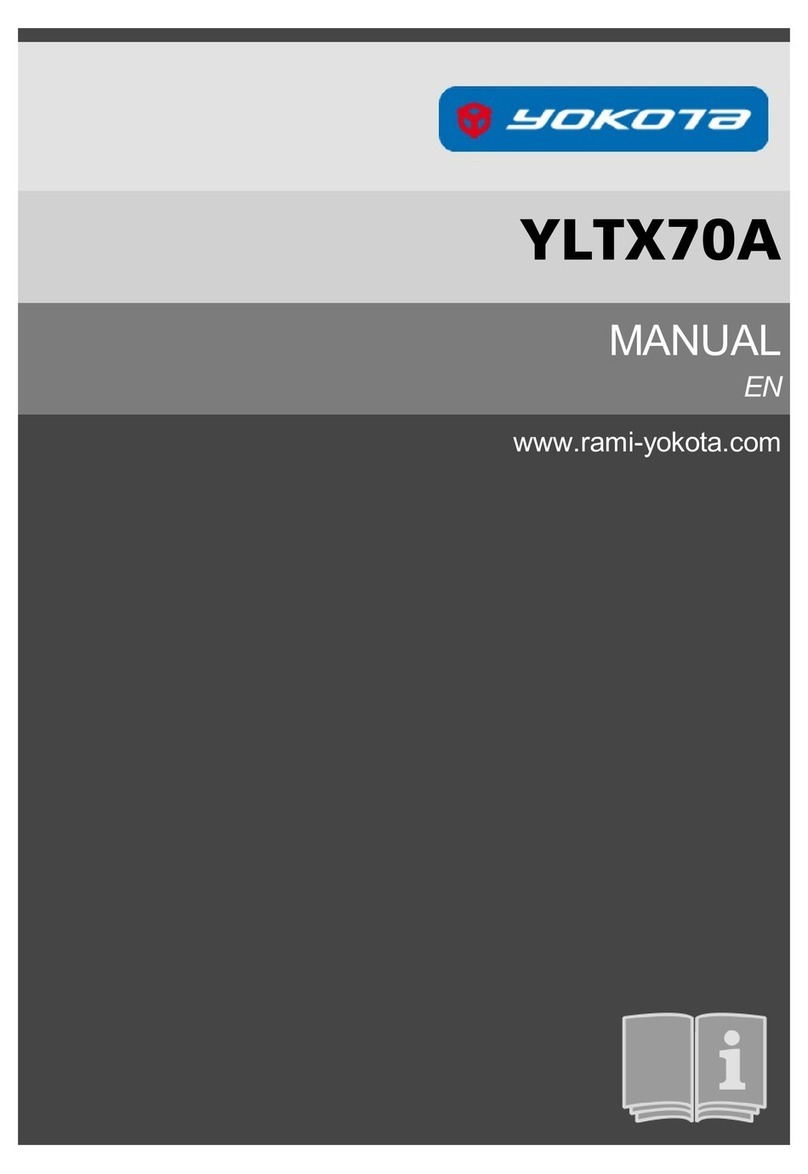Tools shall be inspected periodically to verify that the ratings and markings required by the applicable part of the ISO 11148 series are legibly marked on the tool. If not the user/employer
shall obtain replacement labels from the dealer or manufacturer.
Use only tight fitting gloves, loose gloves can be trapped or entangled causing injuries.
Use the specified gloves for the application that protects against: heat, cold, entanglement, cutting, impacting
Do not wear any shawls jewelry etc that can be trapped or entangled causing injuries.
In case of power loss, release the trigger immediate.
Make the possible countermeasures to minimize noise emission: if possible, use silence materials on the workpiece or walls around the work station.
A risk assessment related to the noise emission at the work station on the work piece has to be made to determine the correct ear protection according to health and safety regulation.
A risk assessment related to the vibration exposure to determine the maximum working hours per day for the operator. Vibration can cause damage to blood vanes and nerves (white finger
disease). Hold the tool with light but safe grip, higher grip force can increase vibration effects.
Electrical Safety
This product is for the indoor exclusive use. Do not use it in rain, in a damp place and a wet place. Moreover, never use it in a place with the fear of the ignition and the explosion, because
those are hazardous situations.
Do not move by holding the power cord. Do not pull the cord to remove the plug from the socket-outlet.
Avoid damage of cord due to stepping, entangling, or unreasonable force, a damaged cable must be replaced immediate.
Avoid pinching of power cord in the object to be tightened or surrounding facility in the tool operation and avoid the contact with rotating parts. The power cord may be damaged and it may
result in accidents.
Use the battery charger at rated supply voltage (AC 100-240 V).
Do not use DC power supply, engine generator, or power transformer.
Keep away from sources generating large electromagnetic noise, such as welder, DC brush motor.
Be sure to use the provided power supply cord. Use of other power supply cord may cause malfunction, heat generation, or fire.
Be sure to fully insert the power plug. Failure to do so may result in electric shock or fire due to heat generation.
If you do not use the product, unplug from the receptacle.
Wipe out dust or stain accumulated on the power plug or receptacle with a dry cloth. Failure to do so may result in electric shock or fire.
Do not insert or remove the power plug from the receptacle with wet hand. Doing so may result in electric shock.
Never disassemble or modify the charger.
Battery Safety
Do not disassemble or modify the battery pack and battery charger, doing so may result in heat generation, fire, electric shock, or injury.
Do not throw the battery pack into fire or heat it, doing so may result in rupture or release of hazardous substances.
Do not drive a nail or give an impact such as fall on the battery pack or battery charger. Doing so may result in heat generation, fire, electric shock, and/or injury.
Do not short-circuit the terminals of the battery pack.
Do not carry or store the battery pack with metal object such as nail. Doing so may result in smoking, ignition, or rupture.
If the battery pack gets hot during its use, stop using it immediately and contact your sales outlet or sales agent.
If the battery pack leaks, avoid contact with the substance, stop using it and contact your sales outlet or sales agent.
Charge the battery pack in well-ventilated place. While charging, do not cover the ventilation openings on the battery pack and battery charger with cloth. Doing so may result in rupture or
fire.
Do not charge the battery pack at less than 0 or more than 40 . Doing so may result in rupture or fire.
Do not store the battery pack in a place reaching over 50 . Doing so may cause deterioration of the battery pack and may result in smoke or fire.
Attach an anti-short-circuit cap after the battery pack is removed from the tool or the battery charger or when the tool is not used. Failure to do so may result in short-circuit of the terminals
of the battery pack and fire.
Do not expose battery cartridge to water or rain. A battery short can cause large current flow, overheating, possibly burns and even a break-down.
Do not dispose of battery packs into household waste, fire or water. Battery packs should be collected, recycled or disposed of in an environmentally-friendly manner.
If the electrolyte of the battery gets in your eyes, do not pass your hand over your eyes, but flush them with plenty of clean water and seek medical attention. Failure to do so may result in
loss of vision.
If the electrolyte of the battery comes in contact with body part or clothes, rinse with a plenty of clean water and seek medical attention. Failure to do so may result in dermal inflammation or
injury.
If the tool is not used for long time, fully charge the battery pack before storage. Even during storage, fully charge the battery pack at least once every six months. Otherwise, over-discharge
of the battery pack may prevent it from charging.
Accessories
Only use accessories and consumables that are designed for the use with this tool.
Select the best available inserted/mounted accessories/consumables for the lowest possible noise level and vibration. Replace them in case of an increased noise level and/or vibration.
Do not use worn or bad fitting impact sockets or extensions, as this is likely to increase noise and vibration.
For impulse wrenches we advise to use “sleeve drive” sockets to minimize noise and vibration.
Make sure that the inserted/mounted tool/accessory is properly held by the retainer and make sure that the retainer is in good condition. Never use the tool without a retainer as this may
cause high speed projectiles.
Use the inserted/mounted accessory/tool according to the manufacturer specifications.
Only use impact rated sockets when using impact or impulse wrenches.
Using the tool:
Before start using the tool, make sure that you are familiar with the workplace and surrounding area.
Always obey the safety regulations for the work area you are working in.
During operating the tool, the operator may be exposed to hazards as crushing, impacts, heat, vibration, cuts, abrasions, etc: Wear suitable gloves.
Any person handling the tool must be able to handle the size, weight and power of the tool.
Always be prepared for normal/abnormal movements/forces generated by the tool.
Keep your body in balance, place your feet safe and secure.
When using a power tool, you may experience discomfort in your hands, arms, shoulders, neck and other parts of your body.
If you experience symptoms such as persistent or recurring discomfort, pain, throbbing, aching, tingling, numbness, burning sensation, or stiffness: Do not ignore these warning signs. Stop
using the tool, tell your employer and consult a qualified health professional.
Check if the direction of rotation is in the required direction.
Adjust the torque according the requirements for the application, see below paragraph: Adjustments.
Place the tool with the accessory on the bolt/nut screw.
Pull the trigger to start the tool and release the trigger to stop the tool.
Push the lever to start the tool and release the lever to stop the tool.
Do not overtighten the bolt/nut/screw, a broken part can become a projectile causing danger or injury.
When loosening the bolt/nut/screw may become a projectile causing danger or injury.
Operator should change posture regularly to avoid discomfort and fatigue.
Use hear protection according to employer, health and safety regulations.
Standby / working mode
After inserting the battery the tool will be in standby mode, pull the trigger once to switch into working mode. Take note that the tool will rotate pulling the trigger in standby mode.
After pulling the trigger the LED on the grip will light according to the speed setting and the fan will be activated. The tool returns to standby mode after 15 minutes of no use.
Torque Adjustment
Always disconnect the battery before adjusting the torque.
The torque output adjustment is a combination of the relief valve setting and speed setting.
Relation between relief valve setting and speed setting.
